Museo del Foro de Caesaraugusta // Caesaraugusta Forum Museum


Hola querido hiver.
La ciudad de Zaragoza en España es la única del imperio romano que ostentó el nombre completo del emperador Caesar Augusto. Se estima que fue fundada en el año 14 a. C., aunque su origen se remonta al poblado ibérico de Salduie.
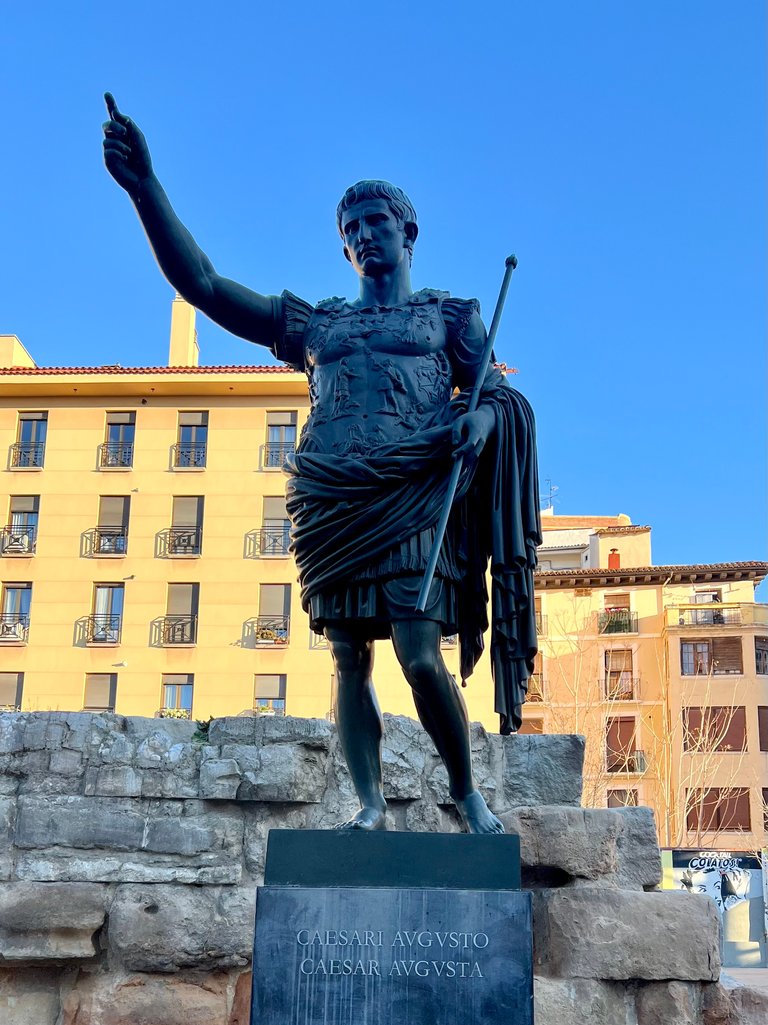
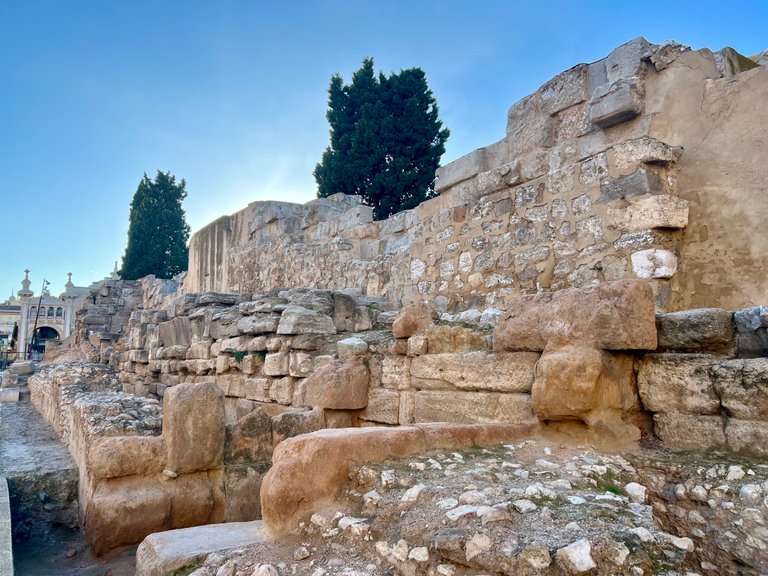
Más de dos mil años de historia suponen un reto a la hora de conservar los restos arqueológicos que aparecen cada vez que se pretende edificar. Dentro del perímetro de lo que fueron sus murallas es imposible picar sin resucitar algún elemento de interés. No pocos proyectos han sido sacrificados al tiempo que dieron paso a museos como el que hoy visitamos en este post.
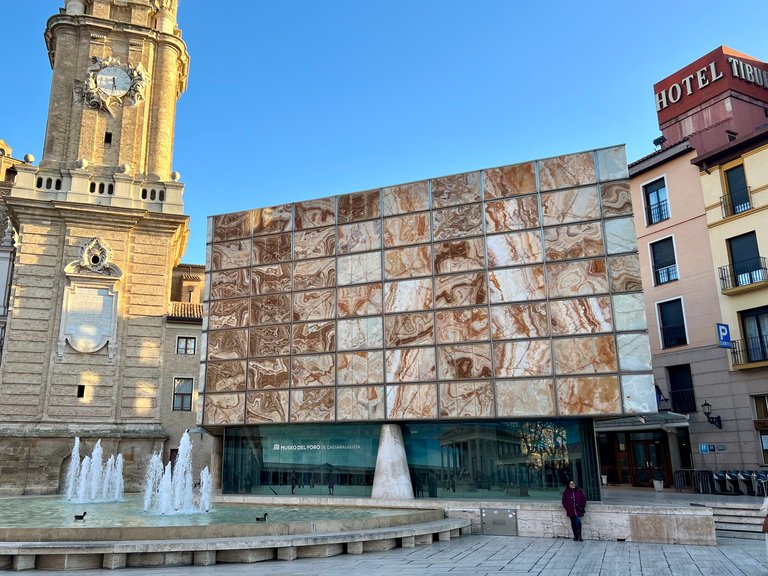

Fruto del afán conservador e investigador son los cuatro museos que conforman la ruta de Caesaraugusta y que nos permiten conocer los lugares y edificios públicos más importantes de la Zaragoza romana: Foro, Puerto, Termas y Teatro.
El Museo del Foro está bajo la actual plaza de la Seo. Su entrada destaca del entorno al ser una construcción moderna pero la visita se realiza por completo en el subsuelo.
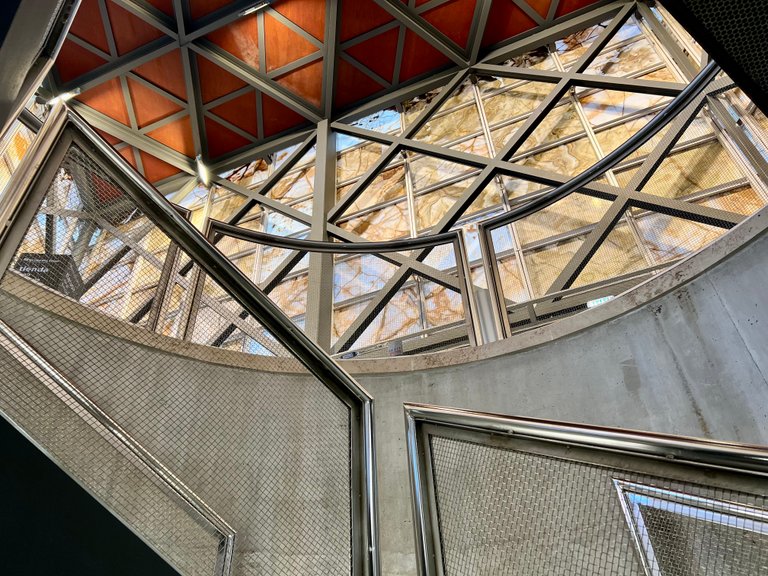
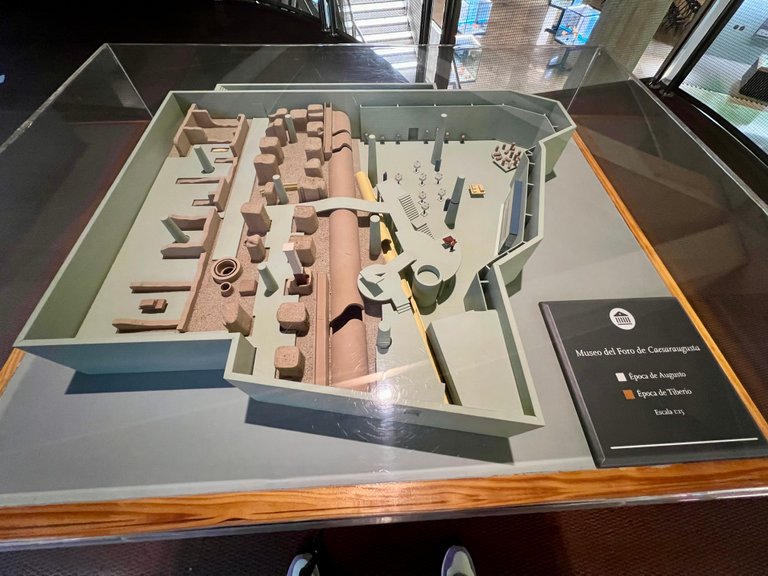
En la planta calle tenemos el mostrador de información y una pequeña tienda. Se accede al museo descendiendo por una escalera de caracol metálica. En la entreplanta nos espera una maqueta que nos ayuda a interpretar lo que encontraremos en él.
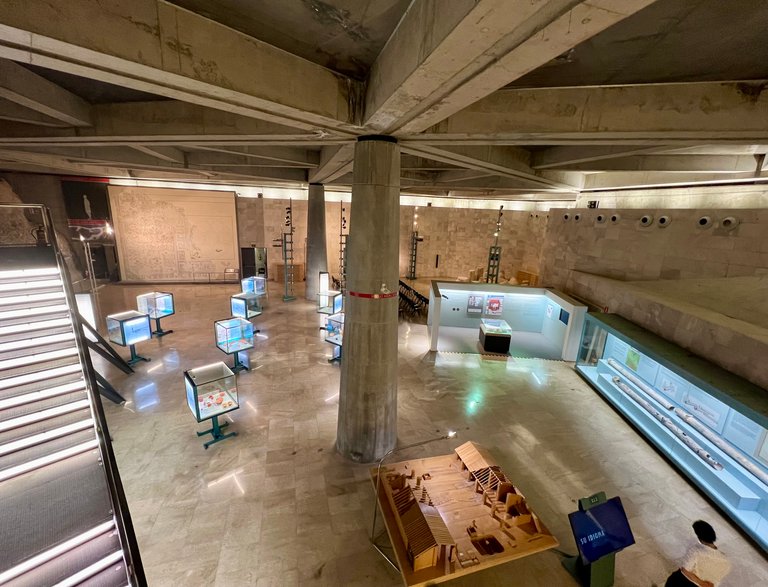
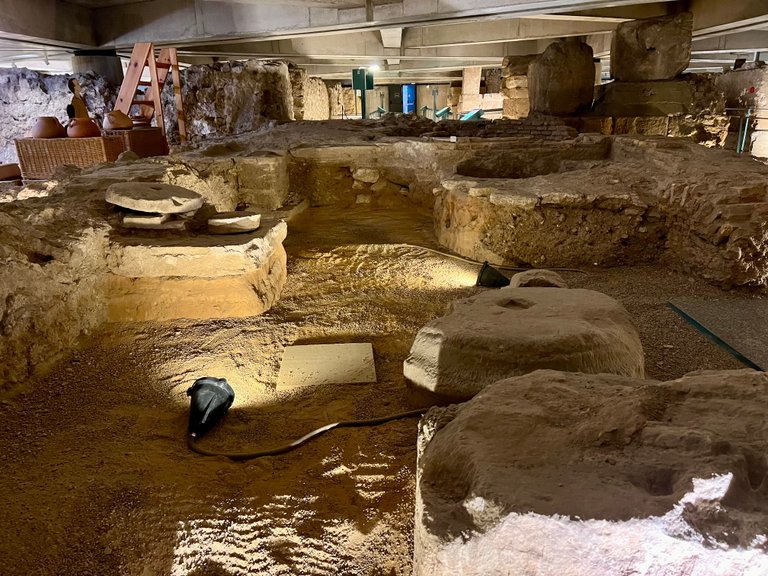
Una pasarela metálica nos permite deambular sobre y entre los restos del siglo I a. C., la época más antigua. Son los restos de lo que fue un mercado y los cimientos de las columnas que sujetaban el pórtico del foro.

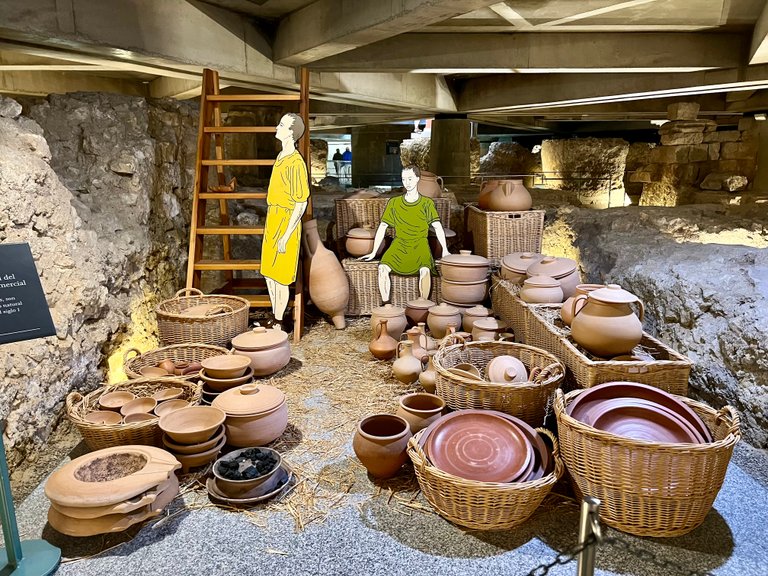
Me gustó encontrar esta maqueta diseñada para que las personas invidentes conozcan el espacio mediante el tacto. Su megafonía me sirvió para ampliar la información de lo que mis ojos estaban viendo. También facilitaba la tarea esa representación de un local comercial de un alfarero de esa época.
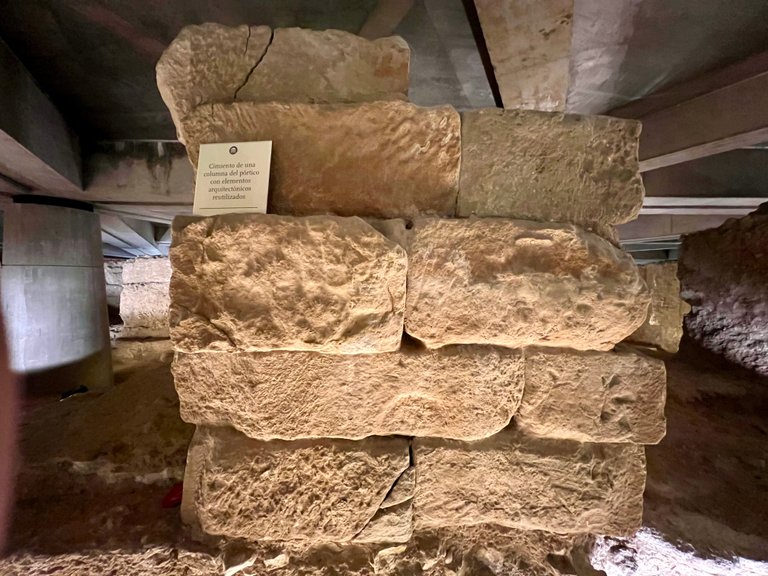
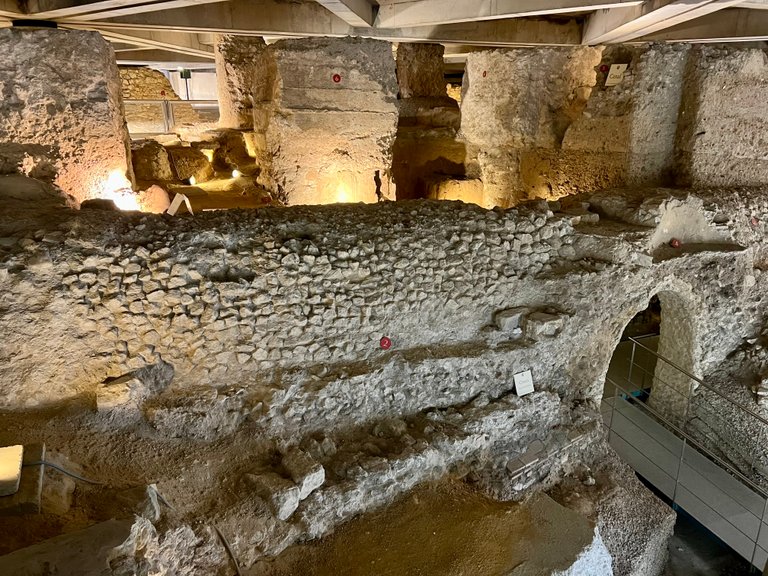
Los inicios de las columnas del pórtico son enormes, imagina los varios metros que medían. Una obra imperial, desde luego. Desde aquí descendemos hasta la planta sótano, donde está el resto del museo.
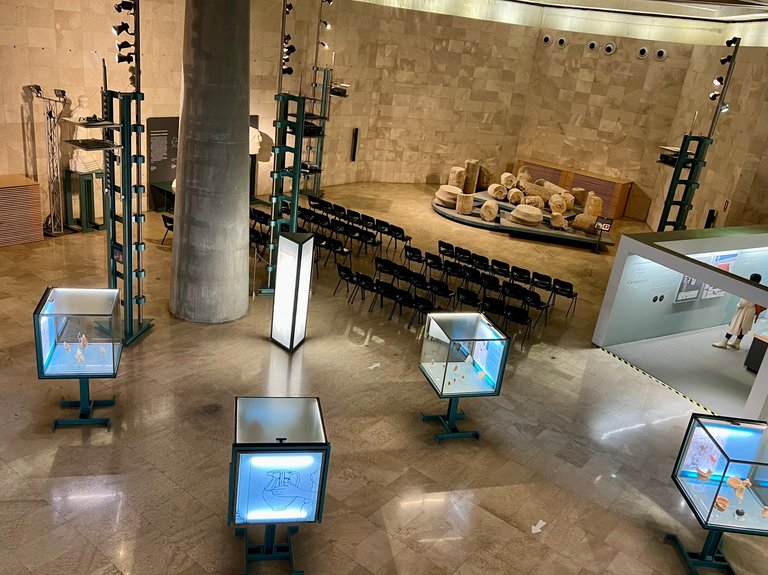

Aquí se puede visionar un documental que utiliza al río Ebro como narrador y que nos relata los orígenes de la ciudad y su evolución durante su época romana. Merece la pena detenerse por esos minutos, pues comprendes mejor las dimensiones de la tarea que aquellos hombres emprendieron. Es increíble lo que fueron capaces de construir con tan escasa tecnología.
Un ejemplo son esas tuberías de plomo y que es raro encontrar en su emplazamiento original, como lo fueron ellas. A lo largo de la historia los materiales se han reciclado tanto como se ha podido, por eso es un acontecimiento a destacar.

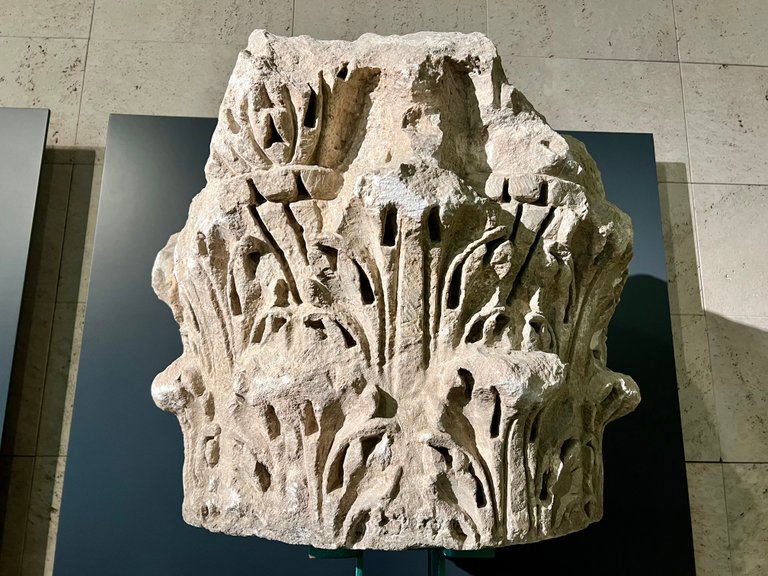
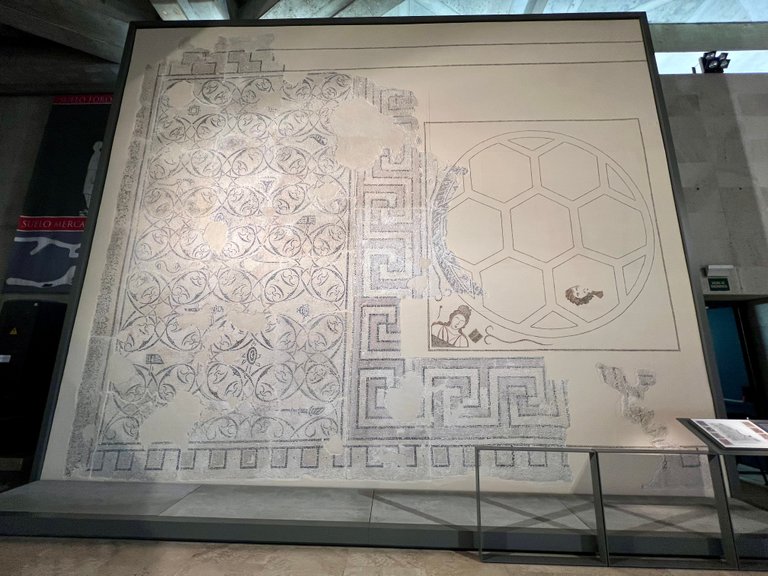
Como elementos que llamaron mi atención están maqueta que recrea el foro de Caesaraugusta y piezas artísticas como ese capitel corintio y los restos de un mosaico.
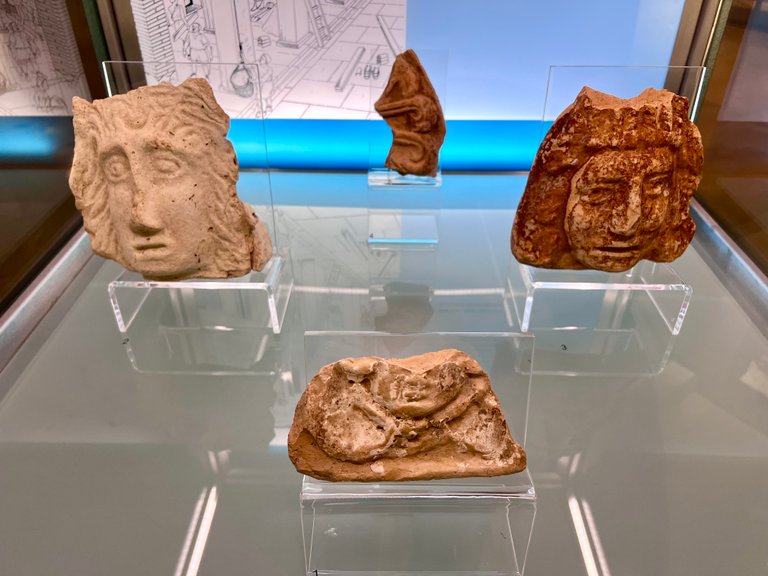

La zona de los cubos se destina a piezas de la vida cotidiana separadas por temática. Cada uno contiene una breve explicación sobre la escritura, la cocina, la arquitectura, el juego… e incluyen fragmentos y elementos originales.

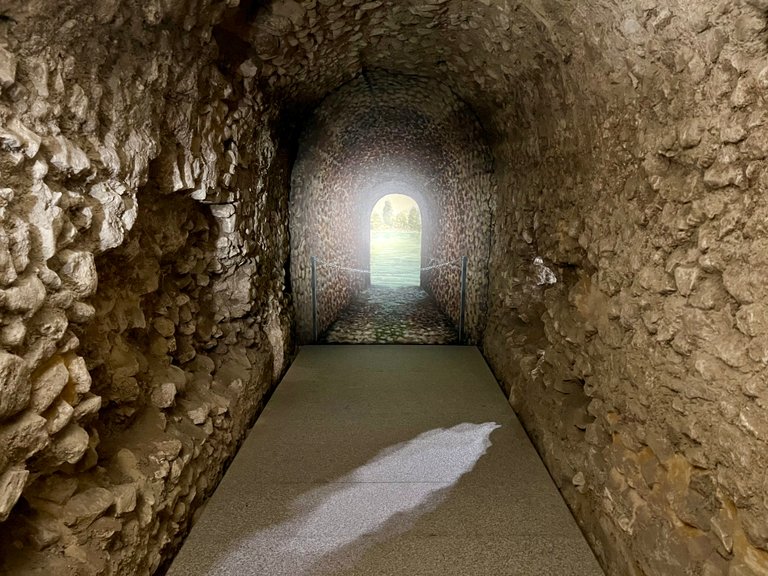
La visita termina con una experiencia de lo más curiosa: nos podemos adentrar en la cloaca principal del foro de Caesaraugusta. Sí, sí, es lo que te imaginas, es la tubería que recogía los desechos y el agua de las lluvias y que desembocaba en el río Ebro.
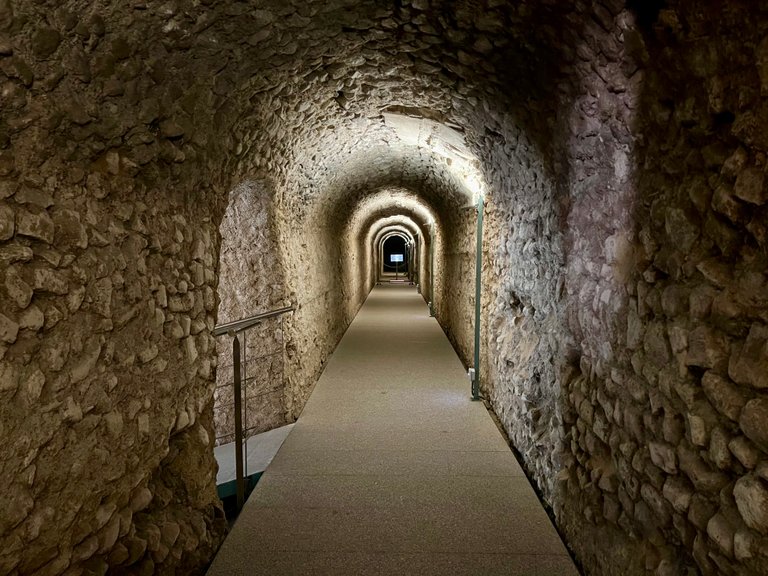
Con esto llegamos al final. Te dejo aquí el enlace a la web oficial del museo por si deseas ampliar la información.
Hasta la próxima publicación. Mientras tanto, ¡cuídate!

Herramientas: Cámara iPhone 13 Pro, editor de fotos Mac.
Si te gusta lo que publico, únete a mi Fanbase pinchando aquí

©️Copyright 2024 Paloma Peña Pérez. Todos los derechos reservados.



Hi, dear hiver.
The city of Zaragoza in Spain is the only city in the Roman Empire to bear the full name of the emperor Caesar Augustus. It is estimated that it was founded in 14 BC, although its origins go back to the Iberian settlement of Salduie.


More than two thousand years of history pose a challenge when it comes to conserving the archaeological remains that appear every time a building is planned. Within the perimeter of what were once its walls, it is impossible to dig without resuscitating some element of interest. Quite a few projects have been sacrificed while giving way to museums like the one we are visiting today in this post.


The four museums that make up the Caesaraugusta route are the result of the conservation and research efforts. They allow us to get to know the most important places and public buildings of Roman Zaragoza: the Forum, the Port, the Baths and the Theatre.
The Forum Museum is under what is now the Plaza de la Seo. Its entrance stands out from the surroundings as it is a modern construction, but the visit takes place entirely underground.


On the ground floor there is an information desk and a small shop. Access to the museum is via a metal spiral staircase. On the mezzanine floor there is a model that helps us to interpret what we will find there.


A metal walkway allows us to wander over and between the remains of the first century BC, the earliest period. These are the remains of what was once a marketplace and the foundations of the columns that supported the portico of the forum.


I was pleased to find this model designed for blind people to learn about space by touch. Its public address system helped me to expand the information about what my eyes were seeing. The representation of a potter's shop of the time also made the task easier.


The beginnings of the portico columns are enormous, imagine how many metres long they were. An imperial work, indeed. From here we descend to the basement, where the rest of the museum is located.


Here you can watch a documentary that uses the river Ebro as a narrator and tells the story of the origins of the city and its evolution during the Roman period. It is worth stopping for those few minutes, as you can better understand the dimensions of the task that those men undertook. It is incredible what they were able to build with so little technology.
One example is those lead pipes, which are rare to find in their original location, as they were. Throughout history, materials have been recycled as much as possible, which is why it is such a remarkable event.



The elements that caught my attention were the model that recreates the forum of Caesaraugusta and artistic pieces such as the Corinthian capital and the remains of a mosaic.


The cubes area is dedicated to pieces of everyday life separated by theme. Each contains a brief explanation of writing, cooking, architecture, play... and includes fragments and original elements.


The visit ends with a most curious experience: we can enter the main sewer of the forum of Caesaraugusta. Yes, yes, that's what you can imagine, it is the pipe that collected waste and rainwater and that flowed into the river Ebro.

This brings us to the end. I leave you here the link to the museum's official website in case you want more information.
Until the next post. In the meantime, take care!
Pinmapple code: [//]:# (!pinmapple 41.65533 lat -0.87637 long d3scr)

Tools: iPhone 13 Pro camera, Mac photo editor.
Translated with DeepL
If you like my content, join my Fanbase clicking here

©️Copyright 2024 Paloma Peña Pérez. All rights reserved.


Congratulations, your post has been added to Pinmapple! 🎉🥳🍍
Did you know you have your own profile map?
And every post has their own map too!
Want to have your post on the map too?
Me encanta todo lo relacionado con el Imperio Romano y los restos arqueológicos y legado que nos han dejado, y Zaragoza es uno de los puntos más interesantes. ¡Un viaje al pasado al visitar el museo!
Para mí ha sido un viaje al pasado doble, porque ufff solo recuerdo haberlo visitado una vez hace por lo menos 25 años. 🤣🤣
La historia me encanta y estoy disfrutando mucho de hacer este tipo de publicaciones enseñando lugares de mi ciudad al mundo. 😃 Esta ha sido la primera parada de la ruta romana, así que atenta que vendrá más. ❤️🤗 !PIZZA
Eso pasa que vamos en una época y sólo volvemos años después, y muchas veces estos museos van mejorando mucho y con infografías, paneles, etc... se vuelve a disfrutar la visita más. Me gustaría ir a verlo, estuve una vez hace mucho pero en visita rápida sin museos. Así que a ver qué nos cuentas y enseñas! 🤩
!PIZZA
This post has been manually curated by @alokkumar121 from Indiaunited community. Join us on our Discord Server.
Do you know that you can earn a passive income by delegating to @indiaunited. We share more than 100 % of the curation rewards with the delegators in the form of IUC tokens. HP delegators and IUC token holders also get upto 20% additional vote weight.
Here are some handy links for delegations: 100HP, 250HP, 500HP, 1000HP.
100% of the rewards from this comment goes to the curator for their manual curation efforts. Please encourage the curator @alokkumar121 by upvoting this comment and support the community by voting the posts made by @indiaunited.
Thanks for the support! 🤗
Apunto para visitar este museo tan chulo la próxima vez venimos!
Gracias por llevarnos, a través de esta publicación 😉
Si te gusta ver piedras estarás en un buen sitio. 🤣🤣 Me encanta que ya estés pensando en la próxima vez. 😘😘❤️🤗
Jajaja 😂
Me encantan los museos, así que pueden ser piedras o lo que sea, si venimos y nos da tiempo, nos llevas aquí :D
¡Hecho! ✅
Hey, you didn't take us to that museum! We were outside the next day and took photos of those wall remains, but we didn't enter the museum... It looks great and now I'm sad that we didn't enter...
Maybe next time! Thanks for sharing!
You have to leave things pending to return in the future. 😉 In the post there is not everything but there is not much more. It all depends on the interest of the visitor.
Thank you for visiting it with me here! 🤗
Hiya, @livinguktaiwan here, just swinging by to let you know that this post made it into our Honorable Mentions in Travel Digest #2142.
Your post has been manually curated by the @pinmapple team. If you like what we're doing, please drop by to check out all the rest of today's great posts and consider supporting other authors like yourself and us so we can keep the project going!
Become part of our travel community:
Thank you so much for the Honorable Mention, it’s a honour for me. 😊 Of course, I will go to the Discord server to enjoy other travel posts and support them. ❤️🤗
The lighting in the museum is excellent, and your photos look great too!
I am glad you liked it. Yeah, the museum has a diaphanous space and is well illuminated. 😊
$PIZZA slices delivered:
palomap3 tipped duvinca
@duvinca(2/5) tipped @palomap3
No te había podido leer, me encantó este post, lo bien documentadlo que has dejado todo, nadie más que una local enamorada de su ciudad podría hacerlo así.
Este museo es de mis favoritos, me gusta que sea subterráneo y que, a pesar de ello cuando estás allá abajo sientes que el espacio es enorme. Me gusta mucho volver y tus fotos le hacen justicia.
Espero seguir recorriendo esta ruta virtualmente de tu mano!.
Hacía décadas que no lo visitaba y lo poco que recordaba había cambiado bastante. Esperaba menos variedad de información, me sorprendió mucho para bien.
Esto de explorar la ciudad con la idea de mostrarla después me permite sentirme como una reportera, jeje. Lo paso muy bien y esto se lo debo a Hive. 😃❤️🤗
Y además que te has animado a redescubrir tu propia ciudad. Uno se acostumbra a lo cercano, pero Zaragoza es una ciudad con puntos de interés sorprendentes.